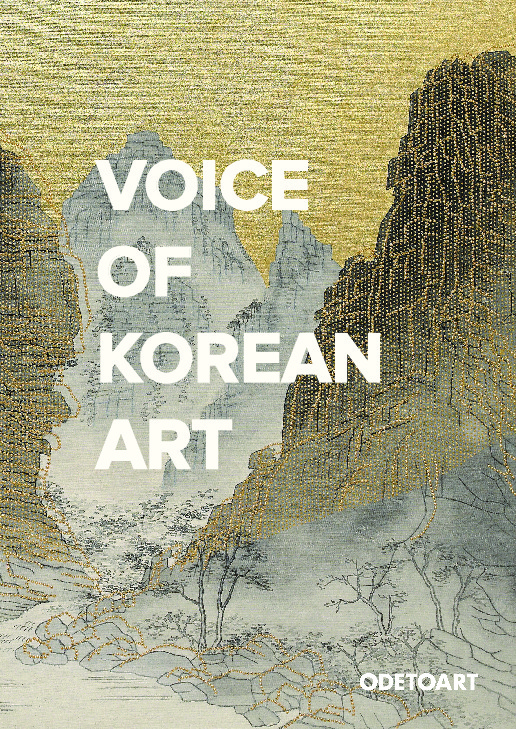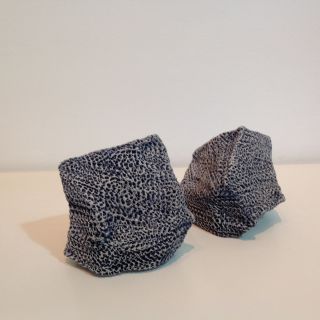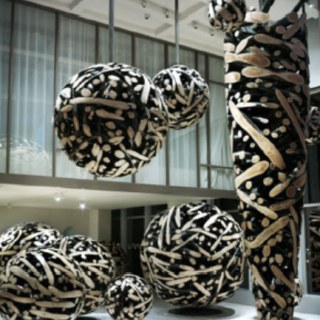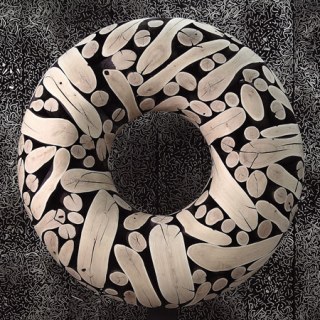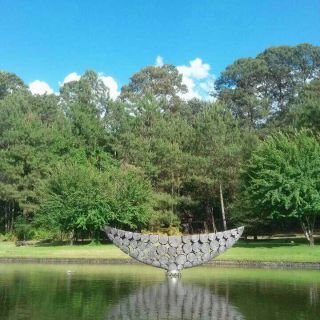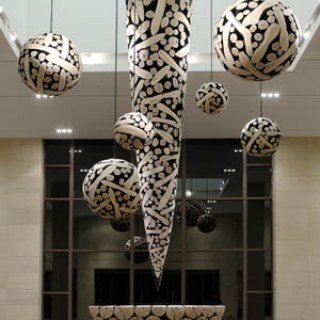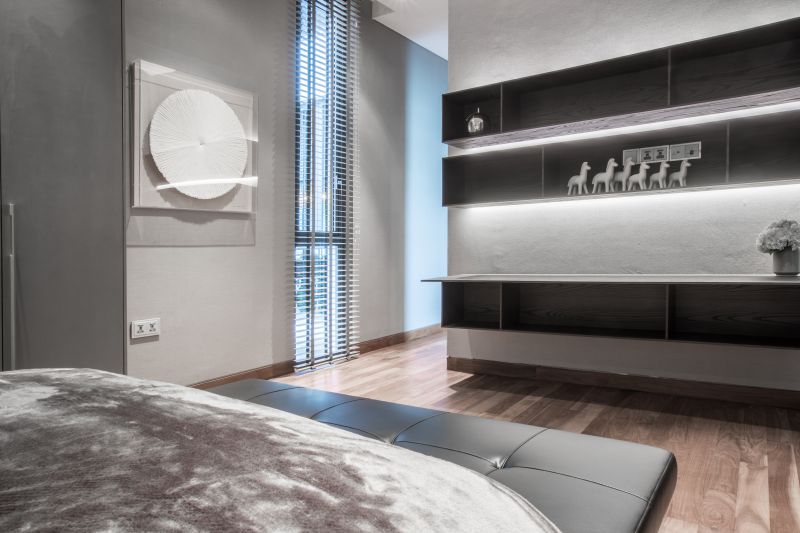
Born in 1956, Korean artist Kim Hee Kyung graduated with a B.F.A. in Sculpture from Ewha Women's University and an M.F.A. in Sculpture from the Graduate School of Ewha Women's University. At present, she is the Dean of the College of Art in Suwon University. Her works are in the collection of leading companies, galleries, and institutions. Hee Kyung Kim’s artwork has been presented at major art fairs around the world, and she sets forth diverse and vast goals in her artistic practice.
Viewing 1 works by Kim Hee Kyung
Sort
Biography 
Biography
Born in 1956, Korean artist Kim Hee Kyung graduated with a B.F.A. in Sculpture from Ewha Women's University and an M.F.A. in Sculpture from the Graduate School of Ewha Women's University. At present, she is the Dean of the College of Art in Suwon University. Her works are in the collection of leading companies, galleries, and institutions. Kim's artwork has been presented at major art fairs around the world, and she sets forth diverse and vast goals in her artistic practice.
Exhibitions 
Exhibitions
Solo Exhibitions
2007 Shanghai Art Fair (Shanghai, China)
2007 Urban Art (Seoul, Korea)
2005 Beijing International Art Expo (Beijing, China)
2003 Pepper's Gallery (Tokyo, Japan)
2002 Seoul Art Fair (Sun Gallery, Seoul, Korea)
2001 Seoul Art Fair (Sun Gallery, Seoul, Korea)
2000 Sun Gallery (Seoul, Korea)
1999 MANIF (Seoul, Korea)
1998 MAC 2000 (Paris)
1996 Gallery 2000 (Seoul, Korea)
1994 Gallery Meegun (Seoul, Korea)
1991 Seoul Press Center (Seoul, Korea)
Invitational (Selected)
2000 Kwangju Biennale Special Exhibition (Kwangju, Korea)
1999 Asian Contemporary Sculpture (Kaoshiung Museum of Fine Arts, Taiwan)
1997 Kwangju Biennale Special Exhibition (Kwangju, Korea)
1994 Inauguration Invitational of Mokam Art Museum (Mokam Art Museum, Korea)
1991 Exhibition of Korean Sculptors Association (Seoul Arts Center)
1987 Inauguration Invitational of Shinchunji Art Museum (Shinchunji Art Museum, Jeju)
1985 Exhibition of Korean Sculptors (San Marco Gallery, Italy)
Collections
National Museum of Contemporary Art (Kwacheon, Korea)
Seoul Arts Center (Seoul, Korea)
Shinchunji Art Museum (Jeju, Korea)
Tankumdae Sculpture Park (Chungju, Korea)
Jungdongjin Sculpture Park (Kangreung, Korea)
Utah State University (Utah, U.S.A.)
2007 Shanghai Art Fair (Shanghai, China)
2007 Urban Art (Seoul, Korea)
2005 Beijing International Art Expo (Beijing, China)
2003 Pepper's Gallery (Tokyo, Japan)
2002 Seoul Art Fair (Sun Gallery, Seoul, Korea)
2001 Seoul Art Fair (Sun Gallery, Seoul, Korea)
2000 Sun Gallery (Seoul, Korea)
1999 MANIF (Seoul, Korea)
1998 MAC 2000 (Paris)
1996 Gallery 2000 (Seoul, Korea)
1994 Gallery Meegun (Seoul, Korea)
1991 Seoul Press Center (Seoul, Korea)
Invitational (Selected)
2000 Kwangju Biennale Special Exhibition (Kwangju, Korea)
1999 Asian Contemporary Sculpture (Kaoshiung Museum of Fine Arts, Taiwan)
1997 Kwangju Biennale Special Exhibition (Kwangju, Korea)
1994 Inauguration Invitational of Mokam Art Museum (Mokam Art Museum, Korea)
1991 Exhibition of Korean Sculptors Association (Seoul Arts Center)
1987 Inauguration Invitational of Shinchunji Art Museum (Shinchunji Art Museum, Jeju)
1985 Exhibition of Korean Sculptors (San Marco Gallery, Italy)
Collections
National Museum of Contemporary Art (Kwacheon, Korea)
Seoul Arts Center (Seoul, Korea)
Shinchunji Art Museum (Jeju, Korea)
Tankumdae Sculpture Park (Chungju, Korea)
Jungdongjin Sculpture Park (Kangreung, Korea)
Utah State University (Utah, U.S.A.)
Critique 
Critique
Soul Tree Blooms
by Martin H. Schmidt, Ph.D in Art, June 11, 2013, Frankfurt
Hee Kyung Kim becomes one with the breath of Mother Nature when she concieves an idea and comes up with the shape of her artworks. Then, she creates work that is in harmony with those waves. Born in 1956 in Seoul, Hee Kyung Kim has created sculpture since her early years of practice without faltering in her commitment to the genre. She graduated from Ewha Womans University - Korea’s most prestigious women’s university. At present, she is a Professor of Sculpture at the College of Art & Design, the University of Suwon. Her works are in the collection of leading companies, galleries, and institutions. Hee Kyung Kim’s artworks have been presented at major art fairs all around the world, and she sets forth diverse and vast goals in her artistic practice.
From a European viewpoint, we cannot forget that it was only sixty-two years ago, in 1953, that the fratricide of war between South and North Korea finally came to an end with a truce. Along the divided Korean Peninsula, North Korea continues to commit provocations against South Korea and this is now part of everyday life in South Korea. About ten years ago, I arrived by Lufthansa to Gimpo, when it was still an international airport - my first visit to Korea. I was surprised to see a sign inside a public phone booth that said “Be aware of spies.“ Having lived in Berlin when the Berlin Wall fell in 1989, I was well aware of the intensity of political confrontation in a divided country and that there was a great yearning for liberalization and unification.
There are hardships experienced, fresh beginnings, creations from nothing, growth and strength. On the other hand, there can also be stalemates and stagnation. Only when this is overcome, can rejuvenating energy forge its path in life. Professor Hee Kyung Kim also experienced a great deal of adversity. At one point in her life, everything changed overnight and threw her life into turmoil - this is reflected in her sculptures and paintings. Kim’s artworks can be grouped into two categories, “ Soul-Tree“ and “Bloom“ to which her more recent works belong.
Hee Kyung Kim had already conceived the idea behind her works when she created “Soul-Tree“ in the early 1990s and has consistently expressed it and rediscovered new things. In her earlier works, trees made of bronze and stone are of a plant-like shape that seems to exude the vitality of a tree reaching upwards towards the sky. This shape became increasingly anthropomorphized over the years. Like Ovid's “Apollo and Daphne,“ the shape of the tree is anthropomorphized by giving it human‘s arms and legs. After being exposed to Western art for some time, Hee Kyung Kim’s formative language began to change. Cycladic sculpture had given tremendous inspiration to artists including Scottish sculptor William Turnbull, and it also inspired her. It helped her gain a new perspective on art and informed her works. Kim had also been inspired to make fresh changes due to revolutionary European surrealist works and relief sculptures by Art Nouveau artists. The ultimate result was her “Soul Tree“ works.
In 2009, Hee Kyung Kim started producing works with paper in what became her “Bloom“ series. These flowers are considered to be relief works. Breaking away from three-dimensional sculpture for some time, she has been producing works with paper that can be seen as “bas reliefs“ with respect to expressive technique. She uses hanji, which is “Korean paper.“ Hanji collectively refers to paper hand-made with mulburry bark. Hanji is thin and translucent. Of all kinds of hanji, the best one is jangji. Jangji is multi-layered, so it is thick and dense and the process of its production is complicated. As jangji is made entirely by hand, the fiber does not show. Hanji is easy to press, stretch, or fold when it is still not completely dry, so it affords an artist greater freedom in creating form. Jangji is also especially strong and absorptive, it absorbs colored liquid into its lowest layer in a fast and intense manner. Witha compressed air injector, Kim sprays color onto her shaped artwork made of paper to add a flow of unique color.
The title of the “Bloom“ series is an art narrative within itself. When a viewer comes close to her work, it is surely a flower that the viewer sees. Delicate waves dominate the contours of the inside of the work. Numerous parallel lines create harmony with surrounding lines and all of them gently meet each other. Wthin the surface of this sculpture is often a condensed flow toward a certain spot. It is much like a volcano erupting, sending lava shooting into the sky, or the coiling of a snail shell, or a leaf of a tree unfolding. Sometimes, it seems to be folding into the inside of the third dimension. Some of the “Bloom“ series works are multi-layered. Some are reminiscent of the charming entities which have layer upon layer of erotic plant motifs placed upon them - by which Georgia O'Keeffe expressed such deep love in her paintings and sculptures. Making a connection between Kim and Georgia O'Keeffe is not unreasonable at all as Georgia O'Keeffe was one of the first American female artists to express flowers over the entire canvas. Her representative works are “Magic of Life“, “Flower of Life,“ and “Flower of Fire.“ In the 1920s, Georgia O'Keeffe’s paintings were revolutionary. Her landscapes depicting objects she discoverd around Santa Fe in New Mexico, her second home, show a strong tendency of Shamanism.
It may not be well understood by Christian Europeans, but Shamanism is still widely practiced in many cultures throughout the world even today. In Korea, as well, Shamanism remains common. According to Shamanistic beliefs, the powers of humans and nature are closely associated and mediated by the shaman. Most shamans in Korea are women, and they are called mudang. Shaman called mudang or munyeo simultaneously live in our ordinary world and in the world of deities and nature. That is, they are mediums of several worlds. The tremendous energies of the world of nature, the world of deities, and the ordinary world can be understood as being at the center of a wheel. Similarly, such energies remain in a mudang. A mudang possesses mysterious knowledge that has been orally handed down for hundreds of years. Having inherited such knowledge, she uses it to bring greater peace to the world. The utmost mission of a mudang is to maintain a balance of power. In carrying out this tremendous task, which can be compared with Atlas, who according to Greek mythology was forced to hold up the heavens, a mudang uses various kinds of natural materials such as paper, string, cotton, wood, and fabric. She fastens fabric or paper around the trunk of a tree or branches, burns wood and paper as an offering, and presents a pig‘s head as an offering. When performing a ritual, the mudang wears a white ritual robe. When a mudang is perfoming a spinning dance, she uses a ceremonial robe with sleeves one to two meters longer than usual. The extended sleeves sway gently to the rhythm of the ritual instruments. I am assured by Hee Kyung Kim’s works that she is a true magician of art with deep understanding of the traditions of Korea, its culture, and its spirituality. Through her works, she maintains a balance between the world of nature, the world of deities and the world of ordinary life. If this was not the case, how could we interpret the artist’s statement on her website in any other way:
Artist’s Statement (August 2011):
Energy bringing life to full bloom, its beauty and vitality being imprinted,
I entrust all sorrows and pains of myself to the waves of the energy.
The waves connect many people and things and
Spread into the vast land and deep sea
And meet splendid waves of the rising sun.
The moment the breath of Mother Nature and myself become one,
My body and soul begin moving together with the waves,
And that becomes a beautiful dance.
At that moment, there is neither you nor I.
Everything and everyone is one. Complete peace...
I dance free inside it.
And its leaves called “Bloom“ are spread by its waves.
A mudang evokes a momentary existence that is destined to collapse and decompose by sending transient and empty signals to nature, but Kim creates immortal masterpieces using bronze and paper, through which her artistic principles will be firmly handed down for generations. I was deeply impressed by Hee Kyung Kim’s “Bloom” series, which materialized on huge canvases. When I saw these works at Art Karlsruhe for the first time, it felt as if they were literally “springing up inside of me.” I was frozen for a time and had to internalize the tremendous flow of energy of these works. My second experience with the “Bloom” series was at the exhibition at Galerie Uhn, Königstein, near Frankfurt, Germany. Exhibited here were mid-sized works filled with balance and harmony. I felt as if I were inside a ceramic vessel filled with fragrant flowers and petals. Quoting an eccentric Austrian artist, Friedensreich Hundertwasser, “Beauty is a Panacea.”
In this rapidly changing world, it is important to bring beauty and romance back into ordinary life. In this era of mediocrity, declining aesthetics, and soulless mass-produced goods, we should promote and experience the diversity hidden inside people and long for the beauty of harmony through art. Hee Kyung Kim brings beauty and romance back into our world through her works.
by Martin H. Schmidt, Ph.D in Art, June 11, 2013, Frankfurt
Hee Kyung Kim becomes one with the breath of Mother Nature when she concieves an idea and comes up with the shape of her artworks. Then, she creates work that is in harmony with those waves. Born in 1956 in Seoul, Hee Kyung Kim has created sculpture since her early years of practice without faltering in her commitment to the genre. She graduated from Ewha Womans University - Korea’s most prestigious women’s university. At present, she is a Professor of Sculpture at the College of Art & Design, the University of Suwon. Her works are in the collection of leading companies, galleries, and institutions. Hee Kyung Kim’s artworks have been presented at major art fairs all around the world, and she sets forth diverse and vast goals in her artistic practice.
From a European viewpoint, we cannot forget that it was only sixty-two years ago, in 1953, that the fratricide of war between South and North Korea finally came to an end with a truce. Along the divided Korean Peninsula, North Korea continues to commit provocations against South Korea and this is now part of everyday life in South Korea. About ten years ago, I arrived by Lufthansa to Gimpo, when it was still an international airport - my first visit to Korea. I was surprised to see a sign inside a public phone booth that said “Be aware of spies.“ Having lived in Berlin when the Berlin Wall fell in 1989, I was well aware of the intensity of political confrontation in a divided country and that there was a great yearning for liberalization and unification.
There are hardships experienced, fresh beginnings, creations from nothing, growth and strength. On the other hand, there can also be stalemates and stagnation. Only when this is overcome, can rejuvenating energy forge its path in life. Professor Hee Kyung Kim also experienced a great deal of adversity. At one point in her life, everything changed overnight and threw her life into turmoil - this is reflected in her sculptures and paintings. Kim’s artworks can be grouped into two categories, “ Soul-Tree“ and “Bloom“ to which her more recent works belong.
Hee Kyung Kim had already conceived the idea behind her works when she created “Soul-Tree“ in the early 1990s and has consistently expressed it and rediscovered new things. In her earlier works, trees made of bronze and stone are of a plant-like shape that seems to exude the vitality of a tree reaching upwards towards the sky. This shape became increasingly anthropomorphized over the years. Like Ovid's “Apollo and Daphne,“ the shape of the tree is anthropomorphized by giving it human‘s arms and legs. After being exposed to Western art for some time, Hee Kyung Kim’s formative language began to change. Cycladic sculpture had given tremendous inspiration to artists including Scottish sculptor William Turnbull, and it also inspired her. It helped her gain a new perspective on art and informed her works. Kim had also been inspired to make fresh changes due to revolutionary European surrealist works and relief sculptures by Art Nouveau artists. The ultimate result was her “Soul Tree“ works.
In 2009, Hee Kyung Kim started producing works with paper in what became her “Bloom“ series. These flowers are considered to be relief works. Breaking away from three-dimensional sculpture for some time, she has been producing works with paper that can be seen as “bas reliefs“ with respect to expressive technique. She uses hanji, which is “Korean paper.“ Hanji collectively refers to paper hand-made with mulburry bark. Hanji is thin and translucent. Of all kinds of hanji, the best one is jangji. Jangji is multi-layered, so it is thick and dense and the process of its production is complicated. As jangji is made entirely by hand, the fiber does not show. Hanji is easy to press, stretch, or fold when it is still not completely dry, so it affords an artist greater freedom in creating form. Jangji is also especially strong and absorptive, it absorbs colored liquid into its lowest layer in a fast and intense manner. Witha compressed air injector, Kim sprays color onto her shaped artwork made of paper to add a flow of unique color.
The title of the “Bloom“ series is an art narrative within itself. When a viewer comes close to her work, it is surely a flower that the viewer sees. Delicate waves dominate the contours of the inside of the work. Numerous parallel lines create harmony with surrounding lines and all of them gently meet each other. Wthin the surface of this sculpture is often a condensed flow toward a certain spot. It is much like a volcano erupting, sending lava shooting into the sky, or the coiling of a snail shell, or a leaf of a tree unfolding. Sometimes, it seems to be folding into the inside of the third dimension. Some of the “Bloom“ series works are multi-layered. Some are reminiscent of the charming entities which have layer upon layer of erotic plant motifs placed upon them - by which Georgia O'Keeffe expressed such deep love in her paintings and sculptures. Making a connection between Kim and Georgia O'Keeffe is not unreasonable at all as Georgia O'Keeffe was one of the first American female artists to express flowers over the entire canvas. Her representative works are “Magic of Life“, “Flower of Life,“ and “Flower of Fire.“ In the 1920s, Georgia O'Keeffe’s paintings were revolutionary. Her landscapes depicting objects she discoverd around Santa Fe in New Mexico, her second home, show a strong tendency of Shamanism.
It may not be well understood by Christian Europeans, but Shamanism is still widely practiced in many cultures throughout the world even today. In Korea, as well, Shamanism remains common. According to Shamanistic beliefs, the powers of humans and nature are closely associated and mediated by the shaman. Most shamans in Korea are women, and they are called mudang. Shaman called mudang or munyeo simultaneously live in our ordinary world and in the world of deities and nature. That is, they are mediums of several worlds. The tremendous energies of the world of nature, the world of deities, and the ordinary world can be understood as being at the center of a wheel. Similarly, such energies remain in a mudang. A mudang possesses mysterious knowledge that has been orally handed down for hundreds of years. Having inherited such knowledge, she uses it to bring greater peace to the world. The utmost mission of a mudang is to maintain a balance of power. In carrying out this tremendous task, which can be compared with Atlas, who according to Greek mythology was forced to hold up the heavens, a mudang uses various kinds of natural materials such as paper, string, cotton, wood, and fabric. She fastens fabric or paper around the trunk of a tree or branches, burns wood and paper as an offering, and presents a pig‘s head as an offering. When performing a ritual, the mudang wears a white ritual robe. When a mudang is perfoming a spinning dance, she uses a ceremonial robe with sleeves one to two meters longer than usual. The extended sleeves sway gently to the rhythm of the ritual instruments. I am assured by Hee Kyung Kim’s works that she is a true magician of art with deep understanding of the traditions of Korea, its culture, and its spirituality. Through her works, she maintains a balance between the world of nature, the world of deities and the world of ordinary life. If this was not the case, how could we interpret the artist’s statement on her website in any other way:
Artist’s Statement (August 2011):
Energy bringing life to full bloom, its beauty and vitality being imprinted,
I entrust all sorrows and pains of myself to the waves of the energy.
The waves connect many people and things and
Spread into the vast land and deep sea
And meet splendid waves of the rising sun.
The moment the breath of Mother Nature and myself become one,
My body and soul begin moving together with the waves,
And that becomes a beautiful dance.
At that moment, there is neither you nor I.
Everything and everyone is one. Complete peace...
I dance free inside it.
And its leaves called “Bloom“ are spread by its waves.
A mudang evokes a momentary existence that is destined to collapse and decompose by sending transient and empty signals to nature, but Kim creates immortal masterpieces using bronze and paper, through which her artistic principles will be firmly handed down for generations. I was deeply impressed by Hee Kyung Kim’s “Bloom” series, which materialized on huge canvases. When I saw these works at Art Karlsruhe for the first time, it felt as if they were literally “springing up inside of me.” I was frozen for a time and had to internalize the tremendous flow of energy of these works. My second experience with the “Bloom” series was at the exhibition at Galerie Uhn, Königstein, near Frankfurt, Germany. Exhibited here were mid-sized works filled with balance and harmony. I felt as if I were inside a ceramic vessel filled with fragrant flowers and petals. Quoting an eccentric Austrian artist, Friedensreich Hundertwasser, “Beauty is a Panacea.”
In this rapidly changing world, it is important to bring beauty and romance back into ordinary life. In this era of mediocrity, declining aesthetics, and soulless mass-produced goods, we should promote and experience the diversity hidden inside people and long for the beauty of harmony through art. Hee Kyung Kim brings beauty and romance back into our world through her works.

Stay connected.
Sign up to our newsletter for updates on new arrivals and exhibitions


